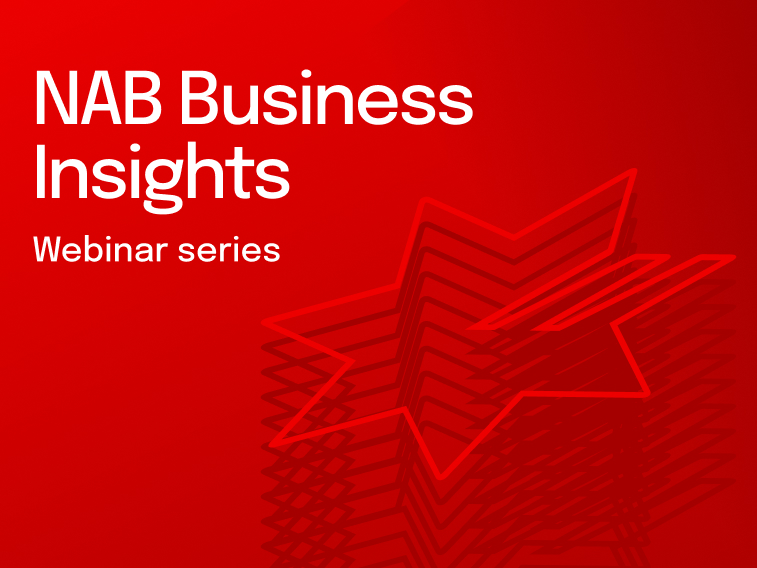Our NAB panel of experts discuss tariffs, general economic conditions, and the NAB AUD/USD forecast.


Webinar
While female-led businesses are a growing economic force in Australia, they receive only 3% of venture capital funding. NAB Executive Small Business Ana Marinkovic explains what can be done about this.

There’s much to celebrate when it comes to women in business in Australia.
Consider the sizeable 46 per cent jump in female business owners over the past 20 years. And that two-thirds of new businesses created in Australia in the past decade were founded by women.
Clearly, female leaders are a growing force – with an abundance of inspiration and motivation to help them succeed.
It’s something I see time and again as I travel around Australia. Increasingly, when I visit family businesses I’m finding women, largely those from the second generation, at the cutting edge of the business. They’re the creative force driving innovation and ecommerce opportunities and searching for new revenue lines.
Moreover, it’s often the female business clients I meet with who have seen a great concept overseas and are trying to introduce it into Australia.
For all that, female-led businesses continue to face huge challenges that prevent them reaching their full potential – the most notable being a lack of financing. In fact, the latest State of Australian Startup Funding report found venture capital funding of Australian businesses founded and led by women had halved since 2020 to .
And, again, I see it on the ground. It’s when our female-led businesses reach a certain size and look to venture capital or private equity-type investments that they often begin to struggle.
Take one of our clients in Queensland. She founded a bridal wear business offering dresses from highly coveted, international designers together with a system where customers can trade in a dress they’ve bought.
Although the business had grown exponentially, to compete with some of the bigger players in the market our client found she needed an injection of cash beyond what NAB was able to lend her. That’s where she came to a standstill – until we used our expertise to help her make the leap to other forms of funding.
In fact, there are many interconnected factors holding female entrepreneurs back, according to a recent CSIRO report.
Financial factors are one, but the report also points to an OECD survey that lists fewer role models, smaller and less effective networks, lower confidence, and competing demands on time as further barriers.
Female-led businesses are hampered by their size too. They are on average smaller, which makes it harder to access opportunities – for instance, collaborative and R&D opportunities that could help them grow.
The CSIRO argues that organisations offering these opportunities can help by taking a more flexible approach that promotes greater inclusivity and accessibility. It suggests, for example, removing time-consuming application procedures around R&D funding. It also encourages these groups to consider smaller projects and a longer-term perspective on value, impact and investment.
Women in business can also help themselves in a number of important ways.
This includes:
Returning to our Queensland client, we were able to talk her through the available funding options and guide her through the negotiation process. We wanted to help her protect her intellectual property at all costs.
In truth, many small business owners struggle to understand the true value of their business – what, say, a 15 per cent stake might mean five years down the track. As a female entrepreneur, it’s all the more reason to surround yourself with supportive, knowledgeable people who can help you embrace the opportunities and sidestep the pitfalls.
The fact is, it shouldn’t be all on you. We all need to think about how we can remove unconscious bias when it comes to women in business, and how we can step up and actively support female entrepreneurship.
It’s clearly worth it – for our economy and our society.
This is a report you need to enter details into to get, so we’ve put in this secondary source.
© National Australia Bank Limited. ABN 12 004 044 937 AFSL and Australian Credit Licence 230686.